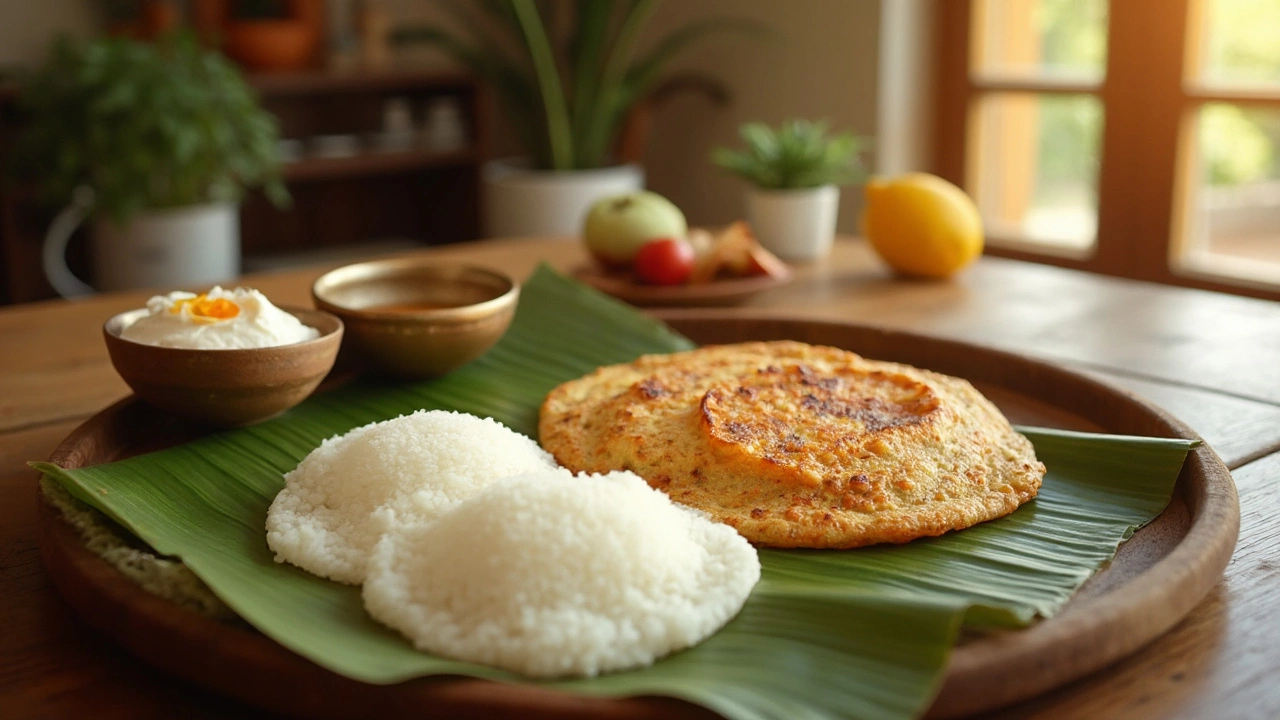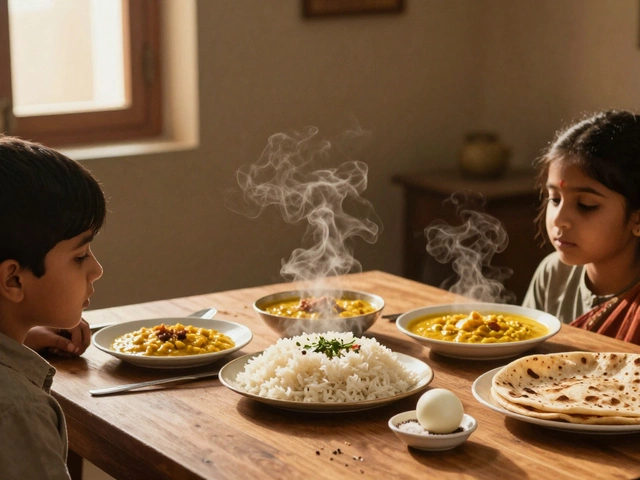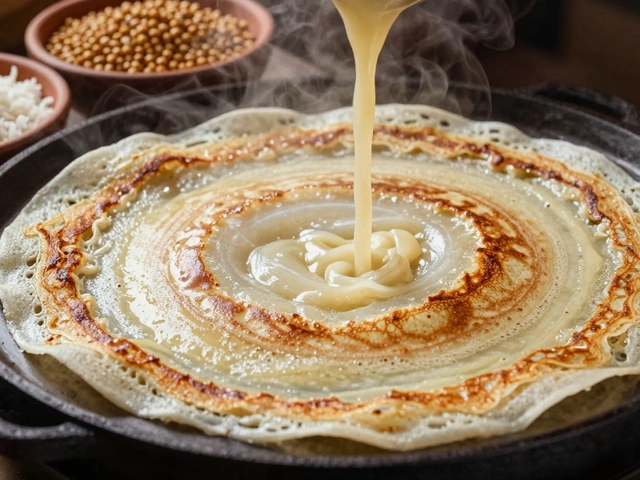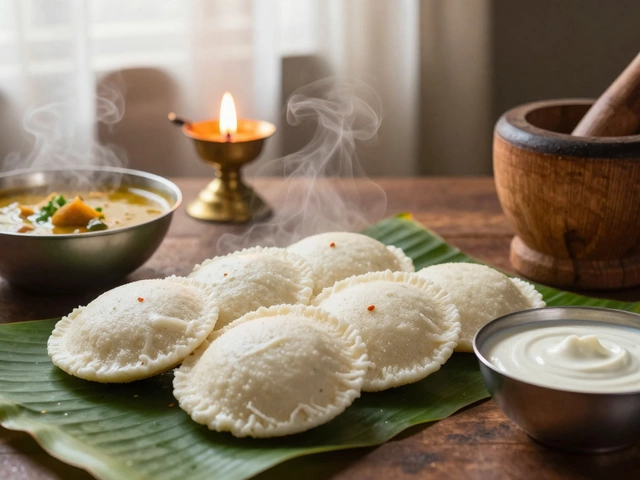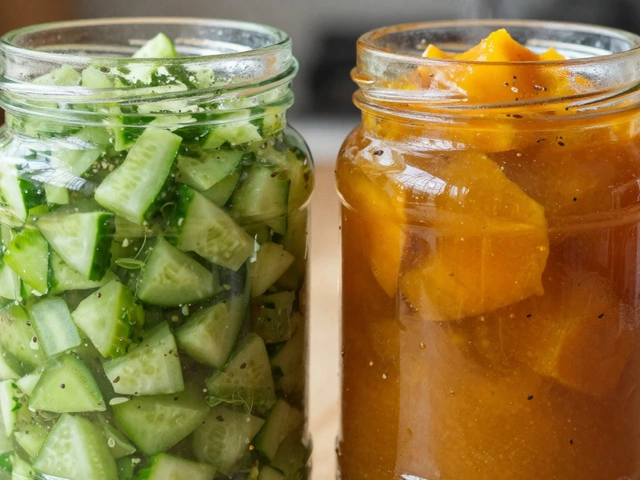Picking between idli and dosa for breakfast? The debate never really ends, does it? Both use a pretty similar rice-and-urad dal batter, but the way you prep, cook, and even eat them makes a big difference to your health.
Straight up, idlis are steamed, so you skip the oil that usually goes into making dosas crispy. That means idlis end up being lighter on calories if you're counting. But dosa fans—don't panic. Dosas aren’t exactly junk food, especially if you tweak the batter or use less oil on your pan.
How you make the batter actually sets the stage. More rice means more carbs; extra dal packs in more protein and fiber. Want their health payoff? It's all in the balance—and a little willpower when you reach for that third helping.
- Idli and Dosa: What’s the Difference?
- Calories and Nutrient Breakdown
- How the Batter Changes Everything
- Health Impact: Weight Loss, Satiety, and Digestion
- Customizing Your Batter for Better Health
- Tips for Tasty, Lighter Bites
Idli and Dosa: What’s the Difference?
Everyone lumps idli and dosa together, but they’re honestly pretty different when you look closer. Both start with almost the same basic batter—rice and urad dal soaked, ground and fermented. That’s the biggest thing they have in common.
Now, here’s where they split paths: idlis get steamed in small molds, while dosas are spread thin on a hot griddle, like a pancake, and cooked with a bit of oil or ghee. That simple switch between steaming and pan-cooking means a lot if you care about fat, texture, and calories.
| Factor | Idli | Dosa |
|---|---|---|
| Cooking Method | Steamed | Pan-cooked, uses oil/ghee |
| Texture | Soft, spongy | Crispy or soft (depending on style) |
| Serving Size* | 2-3 pieces (~100g) | 1 piece (~80g) |
| Main Ingredients | Rice, urad dal | Rice, urad dal |
| Typical Calories | ~35-40 kcal per piece | ~100-120 kcal per dosa (plain, no filling) |
*Serving sizes are just a guide, people eat more or less depending on appetite and sides.
The main SEO keyword here, idli, actually packs less calorie “punch” per serving mainly because you skip the fat for steaming. But don’t decide just yet—dosa isn’t automatically bad. A plain dosa made with a well-fermented batter is still light and filling.
If you ever wondered why a dosa feels heavier, it’s that quick sizzle of oil and the bigger portion. If you're after a soft bite with zero oil, idli is usually your winner. For crunch-lovers and anyone who doesn’t mind using a little fat, dosa is still on the menu. Just remember, the health difference comes down to how you cook and what goes into your batter—not just the name.
Calories and Nutrient Breakdown
If you care about what’s on your plate, the breakdown of calories and nutrients in idli and dosa matter a lot. Here’s the real scoop, based on a standard serving size (1 medium idli, 1 medium plain dosa, no sides or fillings):
| Item | Calories | Carbs (g) | Protein (g) | Fat (g) | Fiber (g) |
|---|---|---|---|---|---|
| Idli (40g) | 39 | 8.3 | 1.6 | 0.2 | 0.3 |
| Dosa (60g) | 86 | 12.9 | 2.1 | 2.6 | 0.7 |
Right away, you notice a dosa has over double the calories of an idli in a similar eat-it-yourself size. That’s mainly because dosa is bigger and needs a slick of oil to fry up that perfect golden crisp. Oil adds to the fat and calorie count, so if you’re watching your intake, this can tip the scale.
Both start with the same rice-dal batter, which means their basic nutrients—carbs, a dash of protein, and a bit of fiber—are in the same ballpark. Idli pulls ahead only because there’s no oil involved, but dosa does come out slightly higher in protein and fiber (mainly thanks to its larger size).
- If you eat two idlis versus one dosa, the calories just about even out, but the fat still stays lower with idlis.
- Piling on extra ghee or butter? That’s going to bump the calories and fat up fast, for either one.
- If you swap in brown rice or millet in the batter, you get more fiber and a steadier blood sugar.
Bottom line: steamed idlis are naturally lighter, but both can fit into a nutrition-focused meal when made mindfully.
How the Batter Changes Everything
It’s wild how much the batter recipe separates idli from dosa—and changes how healthy your plate gets. At first glance, they start with similar basics: rice and urad dal. But the ratio and what you toss in have a big say in calories, protein, and how full you feel after eating.
Here’s a quick look at common batter ratios for both dishes:
| Batter Ingredient | Idli (proportion) | Dosa (proportion) |
|---|---|---|
| Rice | 2 cups | 3 cups |
| Urad Dal | 1 cup | 1 cup |
| Fenugreek Seeds | 1/2 tsp | 1/2 tsp |
Notice how dosa usually leans heavier on rice. That means more carbs in your dosa, but it also gives that classic golden, crisp finish. Now, if you’re watching dosa batter recipe ideas for better health, upping the dal a bit or sneaking in poha (flattened rice), quinoa, or even some oats in the batter can make both idli and dosa lighter and boost protein.
Fermentation is another game changer. A good overnight ferment not only brings that tang, but it bumps up vitamin B12, folic acid, and helps with digestion. You’re not just eating carbs—the probiotics in the batter do your gut a favor. Kind of a breakfast win-win.
- More dal: Adds protein, cuts down glycemic load (lower sugar spikes).
- Less rice: Lowers calories, especially helpful if you’re eating idlis daily.
- Additives like ragi, oats, or millet: Kick up fiber and minerals.
If you ever wondered why homemade idli tastes fluffier or why restaurant dosa stays crisp—yeah, it’s the batter and how long it’s fermented. Batch size, temperature, and ratio all play a role. Switch up your batter and you don’t just change taste; you flip the whole health profile.
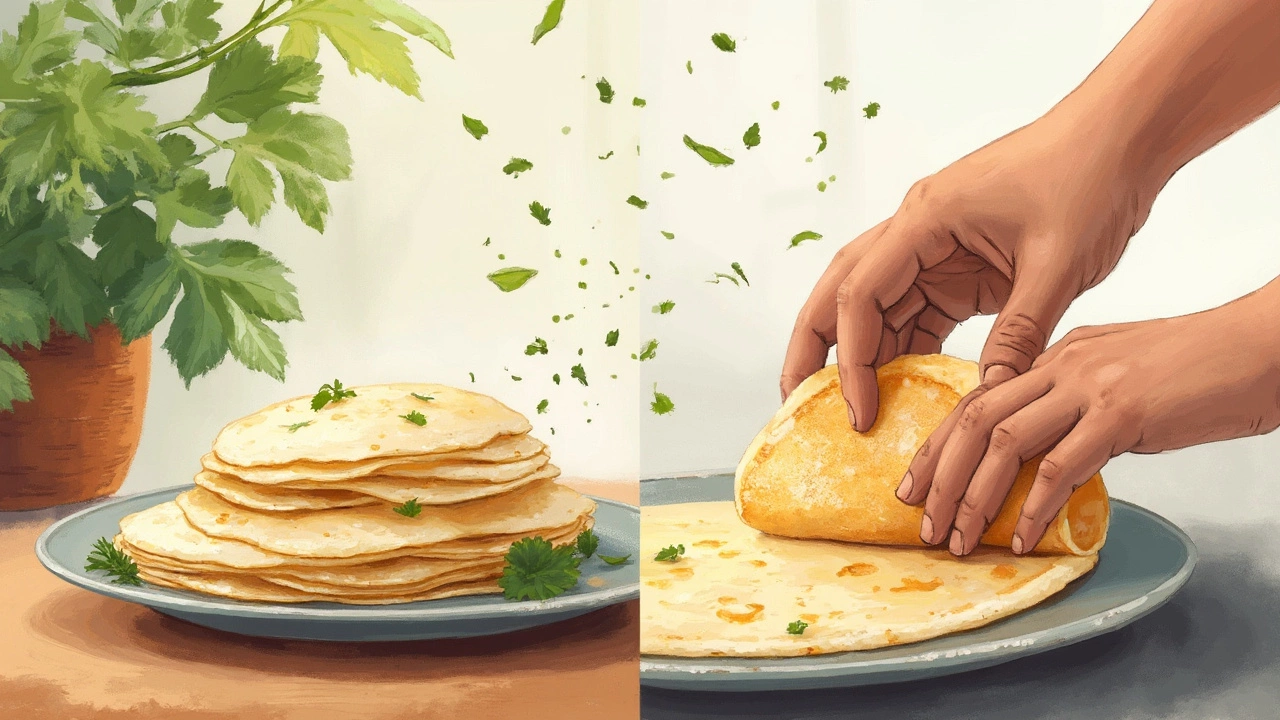
Health Impact: Weight Loss, Satiety, and Digestion
If you’re trying to lose weight, your breakfast (or snack) choice matters. Between idli and dosa, there are clear winners depending on how strict you’re being with calories and how long you want to stay full.
Check this out—one plain idli (about 35g) is roughly 40 calories, while a plain dosa (about 80g) comes in at 85 calories. But the real catch is oil: homemade dosas soak up around a teaspoon of oil, which pushes up the numbers. Steamed idlis don’t need oil at all unless you start dipping them in ghee or chutneys loaded with coconut.
| Food | Serving Size | Calories | Protein (g) | Fat (g) |
|---|---|---|---|---|
| Idli | 1 (35g) | ~40 | ~1.5 | ~0.1 |
| Dosa | 1 (80g, no oil) | ~85 | ~2.1 | ~1 |
If you just look at calories, idli always wins. But satiety—that’s how long you stay full—feels a bit different for everyone. Some find the combo of crispy dosa and sambar more satisfying than fluffy idli, thanks to the fiber in both sambar and the fermented batter. That said, fermentation does your gut a real favor: it makes both idlis and dosas easier to digest and helps your body absorb certain vitamins better. So either way, your stomach will likely thank you.
If you’re into gut health, fermented rice and dal create good bacteria (think probiotics), which helps with digestion and can reduce bloating. And since both dishes are low in fat and high in carbs, they’re easy on your system, even first thing in the morning or as an evening snack.
- Want idlis to keep you full even longer? Add oats or millet to the batter for more fiber and protein.
- Using less rice and more urad dal in your batter also boosts protein and satiety for both dosas and idlis.
Bottom line: If you’re aiming to drop weight, steamed idlis are your best bet. But either dish, especially with a veggie-heavy sambar, won’t wreck your diet or digestion. Just keep an eye on the oil and what you dip them into!
Customizing Your Batter for Better Health
If you’re aiming for a healthier plate, start with the batter. The classic idli-dosa batter is a mix of rice and urad dal, but playing with those ratios can nudge up the nutrition. Less rice and more dal means you get extra protein and fiber, which helps with fullness and blood sugar control. For the calorie counters, this swap makes a difference, too.
Wondering how to take things a step further? Here are a few tweaks that work for both dosa and idli lovers:
- Add oats or millets: Replace 25-50% of the rice with oats, ragi, or little millet. This boosts fiber, adds minerals, and keeps your energy more stable.
- Mix in veggies: Spinach, carrots, or beets blended into your batter not only pack color, but vitamins like A and C. You get tasty color and more nutrition per bite.
- Sprout your dal: Soak and let your urad dal sprout for a day before grinding. This boosts B vitamins and makes the protein easier to digest.
- Limit salt, skip sugar: Go easy on salt and never add sugar. It just bumps up empty calories and doesn’t do anything for flavor or health in this context.
Here’s a quick table to show what you get when you play with common batter tweaks. All values per 100g batter (average):
| Variant | Calories | Protein (g) | Fiber (g) |
|---|---|---|---|
| Classic (2:1 rice:dal) | 160 | 5 | 2 |
| Extra Dal (1:1 ratio) | 150 | 7 | 3 |
| With Oats (25%) | 140 | 5 | 4 |
| With Millets (25%) | 135 | 6 | 4 |
If gluten sensitivity’s a concern, both idli and dosa batter are already gluten-free—no special tricks needed. For even faster prep, soak your grains overnight and grind them fine. The longer you ferment, the lighter and fluffier your breakfast will be, plus you get a nice probiotic boost.
It really boils down to what you put in your batter and how you tweak the classic formula. Try swapping, adding, and tasting. Your gut, energy levels, and tastebuds will thank you.
Tips for Tasty, Lighter Bites
If you love your idlis and dosas but want to keep them healthy, you don’t have to give up on taste. A few quick switches in your kitchen can make a real difference without taking away what you love about them. Here’s how you can get those soft idlis and crispy dosas while keeping your meal easy on the calories and gutsy on flavor.
- Go easy on the rice in your batter. Try using a 1:2 or even 1:3 ratio of urad dal to rice instead of the usual 1:4. This bumps up the protein and fiber, which keeps you full longer and is gentler on blood sugar.
- Slip in some whole grains—think brown rice, quinoa, or even millets. These add a subtle nutty taste, more fiber, and better nutrition overall.
- If you’re a dosa fan, use a good nonstick pan so you only need a light brush of oil. You get the crispiness without all the grease.
- Pile your plate with fresh chutney and sambar instead of coconut chutney with too much oil. Sambar adds a ton of veggies and protein without racking up calories.
- Want easy digestion? Ferment your batter at least 8-12 hours. Fermentation not only improves taste but also breaks down some starches, making both idli and dosa kinder to your stomach.
- Get creative with veggie add-ins. Grated carrot, spinach, or even beetroot mixed into the batter can bump up fiber, color, and satisfy even picky eaters.
Here’s a quick look at how common tweaks change the numbers for a standard portion (2 pieces):
| Version | Calories | Protein (g) | Fiber (g) |
|---|---|---|---|
| Classic Idli | 70 | 2 | 1 |
| Whole Grain Idli | 68 | 2.5 | 1.4 |
| Classic Dosa (fried) | 160 | 3 | 1.5 |
| Low-Oil Millet Dosa | 135 | 3.5 | 2.2 |
Simple swaps, big gains. You’ll get more from your meal without giving up on flavor—or that happy, satisfied feeling after breakfast.
